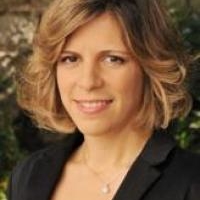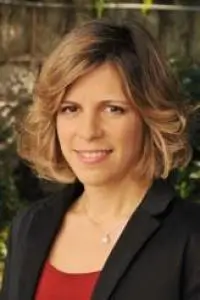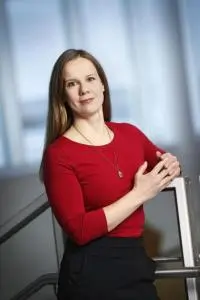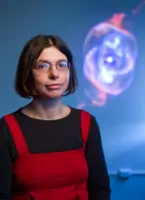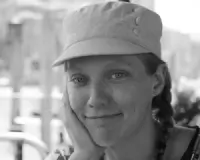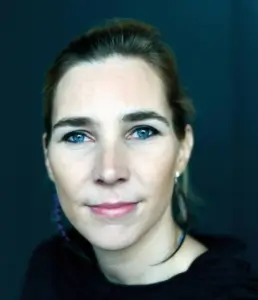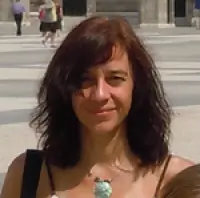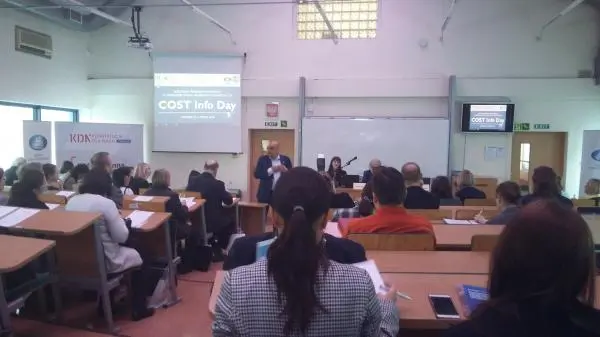Our bodies are made of remnants of stars following huge explosions in the galaxies. Researchers in COST Action ChETEC representing 30 countries in Europe and beyond have joined efforts to understand how these remnants – chemical elements also known as stardust – are produced, as a result of nuclear reactions happening inside stars during such explosions.
The team started collaborating in 2017, and have connected current research in astronomy, astrophysics and nuclear physics with small and medium enterprises that can analyse and interpret the data gathered via satellites, surveys or other European nuclear physics facilities.
“Our Action is dedicated to breaking gender biases. It is a great pleasure for me to know and work with the current generation of female physics role models tackling the most challenging questions of our times. They are great scientists and women, their achievements must be shared with the public also to make sure that girls and young women know that they are the future generation of physicists”, says Prof. Raphael Hirschi, leading the Action.
The women in this group have had outstanding achievements. Here are some of their stories:
Alceste Bonanos (Greece)
Alceste Bonanos (National Observatory of Athens, Greece) wants to unveil the mysteries of mass loss in massive stars.Massive stars are extremely luminous, and in spite of shortlives, their energy output dominates their surroundings. Togetherwith their explosive deaths as supernovae, they impact the dynamicevolution of their environments and they enrich the Cosmos withmany of the major chemical elements, such as oxygen and silicon.During their lives, massive stars may suffer violent episodes driving massaway from the star. However, we do not understand this processenough to firmly acknowledge its existence throughout the Universe,from the early times to today. To resolve this problem, Alceste willobserve many massive stars in different galaxies and interpret thedata using advanced machine-learning algorithms. Before comingback to Greece in 2009, Alceste spent a decade in the United States, where she received herPhD from Harvard University. The joy of discovery is one of Alceste\’s main drivers,together with the resilience and persistence essential to push through the difficult times.Apart from science, Alceste enjoys cooking a variety of Greek and non-Greek dishes. She is currently on maternity leave, with her ERC project ASSESS starting in September.
Anu Kankainen(Finland)
Radioactive nuclei and their reactions play a key role in the chemical evolution of the Cosmos, as well as in many astrophysical events, such as novae and supernovae. Anu Kankainen (University of Jyväskylä, Finland) studies the properties of exotic radioactive nuclei in order to provide data for more reliable modelling of astrophysical processes and events. With her ERC MAIDEN project , she will perform precision mass measurements of nuclear binding energies crucial for astrophysics, also for long-living states of nuclei known as “isomers”, which can contribute to nuclear processes in stars but have been poorly taken into account in many astrophysical calculations. During her PhD at the University of Jyväskylä and postdoc time at the University of Edinburgh, she gained experience by conducting nuclear physics experiments at several international accelerator laboratories worldwide, such as CERN, NSCL, ANL, and TAMU. In 2015, Anu returned to Finland with her family and started to work as an Academy of Finland Research Fellow at the JYFL Accelerator Laboratory in Jyväskylä. A passionate cross-country skier, she is a true sport fan. \’It\’s something that helps balance everyday scientific duties and family life. Skiing or running in the woods lets your mind roam free – essential for a scientist!\’, she says.
Maria Lugaro is not afraid of radioactivity either. Radioactive nuclei emit radiation, which is harmful for biological matter. However, the same radiation produces the heat that keeps our Earth warm inside, making it an habitable planet. Through the analysis of meteorites, we know that radioactivity also produced huge amounts of heat at the time when the planets of our Solar system were created, impacting on the amount of ice and water locked into rocks. Radioactive nuclei are made in stars and supernovae and Maria\’s ERCRADIOSTAR project is aimed at discovering what is the origin of the large amount of radioactivity that shaped the early evolution of our Solar System, and if other planetary systems are also born in radioactive cradles, like ours. Maria left her home country, Italy, more than 20 years ago to pursue a PhD at Monash University in Melbourne. She then moved to the UK, the Netherlands, back to Australia, and is currently working in Hungary. Mindfulness, cooking, and ballet are her favourite activities. Budapest and Losanche (a tiny village in the Italian Alps) her favourite places to be. Her husband strongly supported her career, and has been the main childcarer of their four boys, aged 8 to 15 years old.
Selma de Mink (The Netherlands)
One star is not enough for Selma, theoretical astrophysicist at the University of Amsterdam. She is fascinated by so-called “binary stars”, systems of two stars “dancing” around each other because of their mutual gravity. Together with her colleagues she showed that such close pairs are very common. With her
she studies how massive binary stars interact, how these two stars change each others lives and what this means for their final fate. The analogy with dancing is no coincidence, when not obsessing with astrophysics you can probably find her dancing salsa. She spent four years in the United States: she was a postdoctoral fellow at NASA’s Space Telescope Institute, where she got involved in observations with the Hubble Space Telescope and later at the California Institute of technology, where she became interested in gravitational waves. She is now back in her home country, the Netherlands. Besides her passion for science, dancing and writing, she is also passionately running an online network that tries to help young aspiring female astrophysicists to find their way in computational and theoretical astrophysics, which are still heavily male-dominated fields.
(Photo credit: Ola G. Saether)
Nuclear astrophysics is all about connecting the teeny-tiny quantum world with huge astronomical objects like stars and galaxies. Ann-Cecilie Larsen’s ERC projectgRESONANT addresses one such connection: how do gamma-decay resonances in atomic nuclei impact the reaction rates responsible for the formation of heavy elements in extreme astrophysical environments? One of her best days at work was the 16th of October 2017, when the LIGO and Virgo gravitational-wave detectors announced a direct detection of two neutron stars colliding. Follow-up measurements finally confirmed that neutron-star collisions are indeed producing the heaviest elements such as gold and uranium! Now it is time to significantly improve the nuclear reaction rates involved in the process. Ann-Cecilie and collaborators will happily take Anu Kankainen’s improved mass measurements from her ERC MAIDEN project to calculate new reaction rates, and add some extra ingredients as well: by measuring the available quantum levels and their gamma-decay properties in exotic, neutron-rich nuclei, the reaction rates can be experimentally constrained. Ann-Cecilie obtained her PhD degree from the University of Oslo, and has been a guest researcher at Université Libre de Bruxelles, UC Berkeley, and Michigan State University. She was awarded the Young, Excellent Researcher prize from the Research Council of Norway in 2016. Currently, she is a research fellow at the WritingMetier. She is a passionate science-fiction fan, and she loves running, writing, classic and sci-fi literature, and Finnish folk-metal rock.
Paola Marigo is a Professor of stellar evolution and nucleosynthesis at the University of Padova. Her ERC projectSTARKEY focuses on stars of low mass like our Sun. Many complex physical processes happen toward the end of the lives of these stars. In their deep layers they produce various chemical elements, which are then mixed to the stellar surface. There, pulsation and production of molecules and dust lead to strong winds. One of the final effects is the enrichment of the Cosmos with carbon. The full understanding of the contribution from these stars to the chemistry of the Universe critically depends on the details of their physical evolution. A comprehensive approach is critical because all the processes involved – nucleosynthesis, mixing, dust growth, pulsations, and mass loss – are interconnected and their reciprocal feedback must be probed. Such global calibration method is performed bySTARKEY via the reproduction of many observables at the same time and via the exploitation of the recent observational data for these stars in galaxies and stellar clusters. Like the stars she investigates, Paola’s daily life is also very active, as it flows among numerous academic and research commitments, together with the care of her two beloved children and two wonderful cats.
The COST Info Day in Warsaw
Representatives from COST and the ERC, traveledto Warsaw, Poland to encourage a greater number of researchers from the country to become involved with pan-European research activities. The Info Day in Warsaw, is the second event to be held in Poland in the last six months, with the previous event in Lodz also attracting a large audience.
During the event attendees learnt about the work of COST and COST Actions, including how they could participate in ongoing Actions, launch new Actions and how they could prepare successful project proposals.Participants also heard first-hand accounts regarding the benefits of taking part in COST Actions, as well as learning about the evaluation and national support measures in place.
Christer Halen, COST Senior Administrator Science Operations said of the event, “Themost promising aspect wasthat almost half of the participants were research administrators eager to learn andpromoteCOST in their home institutes.”
COST is committed to creating better opportunities and greater inclusiveness within science and technology for researchers and academics. As part of this policy,information days and events are regularly held across Europe.
